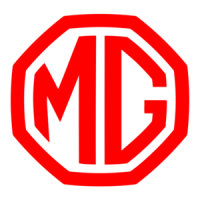Brakes
Hand
brake
The
hand
brake is automatically adju sted with the rear brakes.
If
there is excessive
movement of the
hand
brake
lever, consult your
Distributor
or Dealer.
Lubrication Charge the nipples on the hand
brake
balance lever (2) and
han
d brake cable (1)
Fig. 5 with one of the recommended greases.
Preventive
In addition to the recommended periodical inspection of brake components it
maintenance
is advisable as the car ages, and as a precaution against the effects of wear
and
deterioration, to make a more searching inspection and renew parts as necessary.
It is recommended that:
(1) Disc brake pads,
drum
brake linings, hoses, and pipes should be examined
at intervals no greater than those laid down in the Pass port to -Service.
(2) Brake fluid should be changed completely every 18 mo
nth
s or 18,000 miles
whichever is the sooner.
(3) All fluid seals in the hy
dra
ulic system should be renewed , and all flexible
hoses should be examined
and
renewed if necessary every 3 years or .
36,000 miles (60000 km.) whichever is the sooner. At
the same time the
working surface of the piston and of the bores of the master cylinder,
wheel cylinders, and
other
slave cylinders should be examined and new
parts fitted where necessary .
Care mu st be taken always to observe the following points:
(a) At all times use the rec
ommen
ded brake fluid.
(b) Never leave fluid in unsealed containers. It absorbs moisture quickly
and
this can be dangerou s if used in the braking system.
(c)
Fluid
drained from the system or used for bleeding is best discarded.
(d)
The
necessity for absolute cleanliness th
roughout
cannot be over-
em
pha
sized.
Fig. 5
Preventive
In
addit
ion to the reco
mmen
ded periodical inspecti on of brake components it
maintenance
is advisable as the car ages,
and
as a precaution against the effects of wear
and
dete
riora
tion, to
mak
e a more searching inspection and renew parts as necessary.
It is recommended that:
(1) Disc brake pads,
drum
brake linings, hoses, and pipes should be examined
at intervals no greater
than
those laid down in the Passport to Service.
(2) Brake fluid should be
chan
ged completely every 18
mon
ths or 18,000 miles
whichever is the sooner.
(3) All fluid seals in the hy
dra
ulic system should be renewed,
and
all flexible
hoses should be examined
and
renewed if necessary every 3 years or .
ELECTRICAL
POLAR
ITY
The electrical system is negative g
round
.
Alternato
r The follo wing precautions must be observed to prevent inadvertent damage to
the alternator
and
its control equipment.
Polarity. En sure
that
the correct battery polarity (negative ground) is maintained
at all times; reversed battery or charger connections will damage the alt
ernator
rectifiers. -
B
att
ery connections. The battery must never be disconnected while the engine is
running.
Battery
The battery must be kept clean and dry,
and
the terminals should be smeared
Fig. 1 with petroleum jelly. The vehicle must be level when the electrolyte in the cells -
is being checked.
More
frequent topping-up of the electrolyte levels may be necessary in
hot
weather or when long
journ
eys are
made
.
DO
N
OT
USE
A NAKED LIGHT WHEN C
HECK
ING
THE
LEVELS.
N
OTE.-Do
not
leave the battery in a discharged state for any length of time .
When not in regular use have the battery fully charged,
and
every fortnight give
a short refresher charge to prevent permanent damage to the
batt
ery plates.
'P
acemaker ' (Type A9, AZ9,
All,
AZll).
The electrolyte levels (1) are visible
throug h the
tran
sluscent battery case or may be checked by fully raising the
vent cover (2)
and
tilting it to one side. The electrolyte level in each cell must
be maintained so that the separator plates (3) are just covered. To avoid flooding,
the battery must not be topped up within
half
an hou r of it having been
char
ged
from any source other than the generating system fitted to the car.
To
top
up the levels raise the vent cover
and
pour
distilled water into the
trough
(4) until all the rectangular filling slots (5) are full and the
bottom
of the
trough
is just covered . Press the cover firmly into position; the c
orr
ect
quan
tity of distilled
water will automatically be distributed to each cell. In extremely cold conditions,
run the engine immed iately after topping-up to mix the electrolyte.
Fi
g. 1
Battery connections. The battery must never be disconnected while the engine is
running.
Battery
The battery must be kept clean and dry,
and
the te
rmin
als should be smeared
Fig. 1 with petroleum jelly. The vehicle must be level when the electrolyte in the cells -
is being checked.
More
frequ ent topping-up of the electrolyte levels may be necessary in
hot
weather or when long journeys are made.

